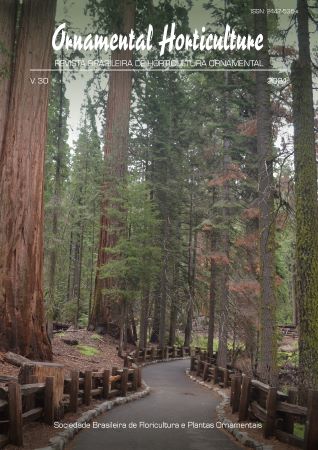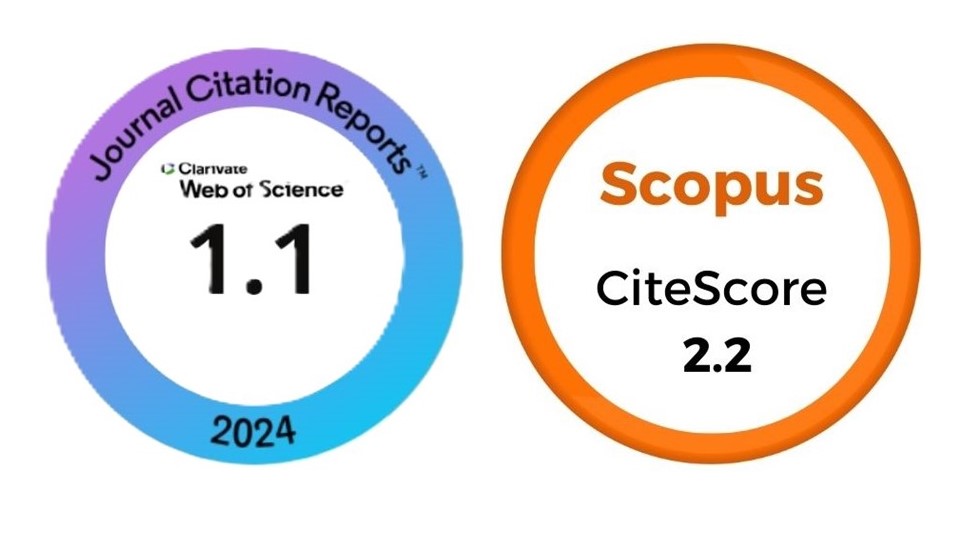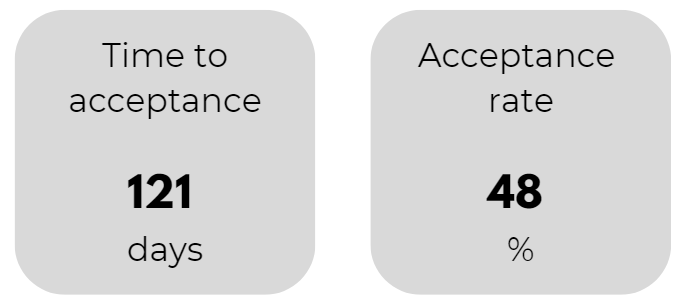Therapeutic gardens: historical context, foundations, and landscaping
DOI:
https://doi.org/10.1590/2447-536X.v30.e242740Keywords:
healing garden, landscaping, restorative garden, sensory gardenAbstract
The Therapeutic Garden can be conceptualized as a designated space engineered to engender benefits on physical, psychological, cognitive, and social well-being of its users, facilitated through either passive or active engagement with nature. This review explores the therapeutic function of gardens, encompassing their historical evolution, theoretical underpinnings, concepts, benefits, uses and design guidelines. The therapeutic attributes of plants have been acknowledged since antiquity, underpinning the belief that nature constitutes a primary agent in fostering well-being. This conviction gained traction during the Middle Ages, by the cloister gardens, which sought healing through a communion with nature. Nonetheless, this relationship waned during the Renaissance, only to resurface in the 18th century within the realm of hospital architecture, underscoring the necessity of reinstating therapeutic gardens as an indispensable adjunct for healing patients. In recent times, there has been a resurgence in the quest to reconnect with nature, driven by scientific research highlighting the myriad health benefits of nature exposure, that fundamental various theories such as the Supportive Gardens Theory, Restorative Gardens, and Healing Gardens. These pioneering studies have paved the way for further research exploring the psychological, physical, and social advantages of gardens. Designs for therapeutic gardens should prioritize user needs, drawing from a multidisciplinary approach rooted in evidence-based design principles. However, specific definitions regarding their form and function remain elusive, allowing for a diversity of activities and adaptability to cater to different users.
Downloads
References
ABREU, M.C.; ANDRADE, K.I.; COELHO JUNIOR, W.P.; SILVA, M.C.; SOUSA, W.G. M.; SANTOS, M.F.; BENDINI, J.N. Botânica em cinco sentidos: o jardim sensorial como um instrumento para a sensibilização quanto a importância da botânica em escolas de um município do sertão piauiense. Research, Society and Development, v.10, n.1, p.1-14, 2021. http://dx.doi.org/10.33448/rsd-v10i1.11448
BARAKAT, A.E.R.; BAKR, A.; EL-SAYAD, Z. Nature as a healer for autistic children. Alexandria Engineering Journal, v.58, p.353-366, 2019. http://dx.doi.org/10.1016/j.aej.2018.10.014
CARRIÃO, G.A.; MARQUES, J.R.; MARINHO, J.L. Atenção hospitalar: interatividades por entre constituição histórico-social, gestão e humanização em saúde. Revista de Gestão em Sistemas de Saúde, v.8, n.2, p.189-202, 2019. http://dx.doi.org/10.5585/rgss.v8i2.14930
CARROLL, C.; MCCRAY, S.; UTTER, J. Acceptability and feasibility of a hospital-based herb and vegetable garden for health care workers. Journal of Nutrition Education and Behavior, v.55, n.12, p.877-883, 2023. http://dx.doi.org/10.1016/j.jneb.2023.10.008
CHICAGO BOTANIC GARDEN. 2024. Sensory Garden. Chicago Botanic Garden center information. Available in: < https://www.chicagobotanic.org/gardens/sensory>. Accessed on: March 11th 2024.
CLOE, E.Y.; JORGENSEN, A.; SHEFFIELD, D. Does a natural environment enhance the effectiveness of Mindfulness-Based Stress Reduction (MBSR)? Examining the mental health and wellbeing, and nature connectedness benefits. Landscape and Urban Planning, v.202, 103886, 2020. http://dx.doi.org/10.1016/j.landurbplan.2020.103886
COOPER-MARCUS, C.; BARNES, M. Gardens in the Healthcare Facilities: Uses, therapeutic benefits, and design recommendations. Martinez: The Center for Health, 1995. 70p.
COOPER-MARCUS, C.; BARNES, M. Healing Gardens: therapeutic benefits and design recommendations. New York: Wiley, 1999.
COOPER-MARCUS, C.; SACHS, N.A. Therapeutic Landscapes: An evidence-based approach to designing healing gardens and restorative outdoor spaces. New York: Willey, 2013.
DING, Y.; ZUEVA, P.; GRAŽULEVIČIŪTĖ-VILENIŠKĖ, I; YABLONSKA, H.; POCZĄTKO, M. A traditional Japanese garden and its lessons for modern times. Landscape Architecture and Art, v.19, n.19, p.85-97, 2021.
DUSHKOVA, D.; IGNATIEVA, M. New trends in urban environmental health research: from geography of diseases to therapeutic landscapes and healing gardens. Geography, Environment, Sustainability, v.13, n.1, p.159-171, 2020. http://dx.doi.org/10.24057/2071-9388-2019-99
FALLAHI, E.; FALLAHI, P.; MAHDAVI, S. Ancient urban gardens of Persia: concept, history, and influence on other world gardens. HortTechnology, v.30, n.1, p.6-12, 2020. http://dx.doi.org/10.21273/horttech04415-19
GIANNENAS, I.; SIDIROPOULOU, E.; BONOS, E.; CHRISTAKI, E.; FLOROU-PANERI, P. The history of herbs, medicinal and aromatic plants, and their extracts. Feed Additives, p.1-18, 2020. http://dx.doi.org/10.1016/b978-0-12-814700-9.00001-7
HAN, A.R.; PARK, S.A.; AHN, B.E. Reduced stress and improved physical functional ability in elderly with mental health problems following a horticultural therapy program. Complementary Therapies in Medicine, v.38, p.19-23, 2018. http://dx.doi.org/10.1016/j.ctim.2018.03.011
HARTIG, T.; COOPER-MARCUS, C. Essay: healing gardens: places for nature in health care. The Lancet, v.368, n.1, p.36-37, 2006. http://dx.doi.org/10.1016/s0140-6736(06)69920-0
KAPLAN, R.; KAPLAN, S. The experience of nature: A psychological perspective. Cambridge: Cambridge University Press, 1989.
KAPLAN, S. The restorative benefits of nature: toward an integrative framework. Journal of Environmental Psychology, v.15, n.3, p.169-182, 1995. http://dx.doi.org/10.1016/0272-4944(95)90001-2
KYRIAKOU, G.; KYRIAKOU, A.; MALOUHOU, A. Medical practice, urban legends, myths and folklore regarding dermatology in ancient Greek history. Actas Dermo-Sifiliográficas, v.113, n.10, p.951-954, 2022. http://dx.doi.org/10.1016/j.ad.2022.10.032.
MATTIUZ, C.F.M. 2023. Estação ESALQ 101/2022: O Jardim Sensorial. Available in: <https://podcasters.spotify.com/pod/show/esalq-midias/episodes/Estao-Esalq-1012022---O-Jardim-Sensorial-da-Esalq-e1eod5t/a-a7f6nkv>. Accessed on: March 5, 2024.
NUNES, J.C.A.; MANZOOR, S. Introduction: Ars therapeutica, hortus sanitatem. Gardens and Therapy. Gardens and Landscapes of Portugal, v.5, n.1, p.1-3, 2018. http://dx.doi.org/10.2478/glp-2019-0001
PARASKEVOPOULOU, A.T.; KAMPERI, E. Design of hospital healing gardens linked to pre- or post-occupancy research findings. Frontiers of Architectural Research, v.7, n.3, p.395-414, 2018
PASHA, S.; SHEPLEY, M.M. Research note: Physical activity in pediatric healing gardens. Landscape and Urban Planning, v.118, p.53-58, 2013. http://dx.doi.org/10.1016/j.landurbplan.2013.05.005
SCARTAZZA, A.; MANCINI, M. L.; PROIETTI, S.; MOSCATELLO, S.; MATTIONI, C.; COSTANTINI, F.; BACCIO, D.; VILLANI, F.; MASSACCI, A. Caring local biodiversity in a healing garden: therapeutic benefits in young subjects with autism. Urban Forestry & Urban Greening, v.47, 2020. http://dx.doi.org/10.1016/j.ufug.2019.126511
SOUTER-BROWN, G.; HINCKSON, E.; DUNCAN, S. Effects of a sensory garden on workplace wellbeing: a randomized control trial. Landscape and Urban Planning, v.207, 2021. http://dx.doi.org/10.1016/j.landurbplan.2020.103997
STEPANSKY, K.; DELBERT, T.; BUCEY, J.C. Active student engagement within a university’s therapeutic sensory garden green space: pilot study of utilization and student perceived quality of life. Urban Forestry & Urban Greening, v.67, 2022. http://dx.doi.org/10.1016/j.ufug.2021.127452
TABRIZI, N.; LAK, A.; MOUSSAVI.A, S. M.R. Green space and the health of the older adult during pandemics: a narrative review on the experience of covid-19. Frontiers in Public Health, v.11, n.1, p.1-16, 2023. http://dx.doi.org/10.3389/fpubh.2023.1218091
THOMPSON, C.W. Linking landscape and health: the recurring theme. Landscape and Urban Planning, v.99, n.3-4, p.187-195, 2011. http://dx.doi.org/10.1016/j.landurbplan.2010.10.006
TYE, J. Florence Nightingale’s lasting legacy for health care. Nurse Leader, v.18, n.3, p.220-226, 2020. http://dx.doi.org/10.1016/j.mnl.2020.03.023
ULRICH, R.S. Effects of gardens on health outcomes: Theory and research. In: COOPER-MARCUS, C.; BARNES, M. Healing gardens: Therapeutic benefits and design recommendations. New York: Wiley, 1999. p.27-85.
ULRICH, R.S. View through a window may influence recovery from surgery. Science, v.224, n.4647, p.420-421, 1984. http://dx.doi.org/10.1126/science.6143402
WANG, Q.; TZORTZI, J.N. Design guidelines for healing gardens in the general hospital. Frontiers in Public Health, v.11, p.1-2, 2023. http://dx.doi.org/10.3389/fpubh.2023.1288586
WOOD, C.J.; POLLEY, M.; BARTON, J.L.; WICKS, C.L. Therapeutic community gardening as a green social prescription for mental ill-health: impact, barriers, and facilitators from the perspective of multiple stakeholders. International Journal of Environmental Research and Public Health, v.19, n.20, 2022. http://dx.doi.org/10.3390/ijerph192013612
YAR, M.A.; KAZEMI, F. The role of dish gardens on the physical and neuropsychological improvement of hospitalized children. Urban Forestry and Urban Greening, v.53, 126713, 2020. http://dx.doi.org/10.1016/j.ufug.2020.126713
YOUNG, C.; HOFMANN, M.; FREY, D.; MORETTI, M.; BAUER, N. Psychological restoration in urban gardens related to garden type, biodiversity and garden-related stress. Landscape and Urban Planning, v.198, 2020. http://dx.doi.org/10.1016/j.landurbplan.2020.103777
ZINGARETTI, G. Evidence based design. International Hospital Federation Journal, v.46, n.2, p.22-24, 2010.
Downloads
Published
Issue
Section
License
Copyright (c) 2024 Ornamental Horticulture

This work is licensed under a Creative Commons Attribution 4.0 International License.








